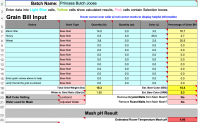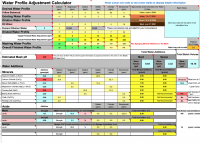Silver_Is_Money
Larry Sayre, Developer of 'Mash Made Easy'
Mash Made Easy version 10.70 is now available for free download on my website in both the US and Metric editions. The software is complete as downloaded, with no teaser version leading to a pay version.
Changes made since the previous version 10.65:
-----------------------------------------------------------------
Replaces the often somewhat confusing and/or cumbersome "Kettle pH" tab/sheet with my totally new "Knockout pH" adjustment computing tab/sheet. Much easier kettle knockout pH adjustment assistance is the result, as all requisite input parameters sans for the Knockout pH Target are pulled in from the main "Mash pH" tab/sheet and the "Sparge Water Adjustment" tab/sheet. The only input required of the user within this new Knockout pH Adjustment assistant module is to select the desired Knockout (post boil and cooling) pH target.
Changes made since the previous version 10.65:
-----------------------------------------------------------------
Replaces the often somewhat confusing and/or cumbersome "Kettle pH" tab/sheet with my totally new "Knockout pH" adjustment computing tab/sheet. Much easier kettle knockout pH adjustment assistance is the result, as all requisite input parameters sans for the Knockout pH Target are pulled in from the main "Mash pH" tab/sheet and the "Sparge Water Adjustment" tab/sheet. The only input required of the user within this new Knockout pH Adjustment assistant module is to select the desired Knockout (post boil and cooling) pH target.
Last edited:









































![Craft A Brew - Safale S-04 Dry Yeast - Fermentis - English Ale Dry Yeast - For English and American Ales and Hard Apple Ciders - Ingredients for Home Brewing - Beer Making Supplies - [1 Pack]](https://m.media-amazon.com/images/I/41fVGNh6JfL._SL500_.jpg)






















